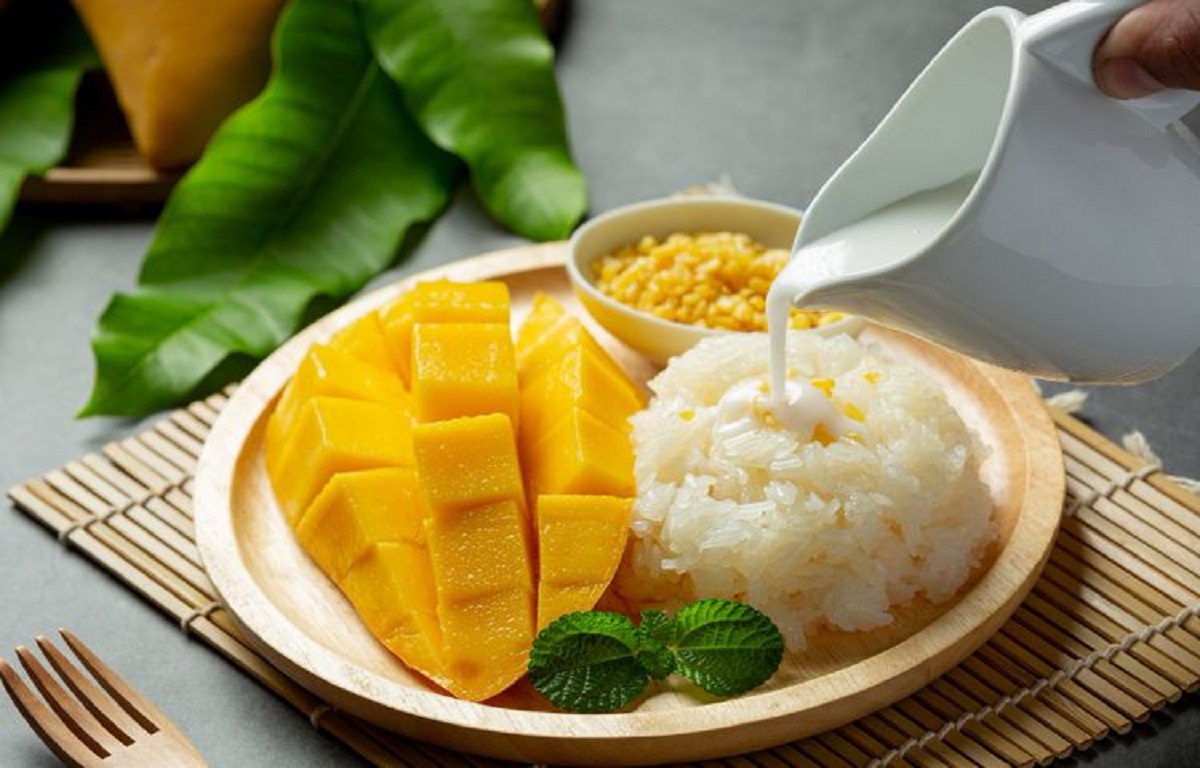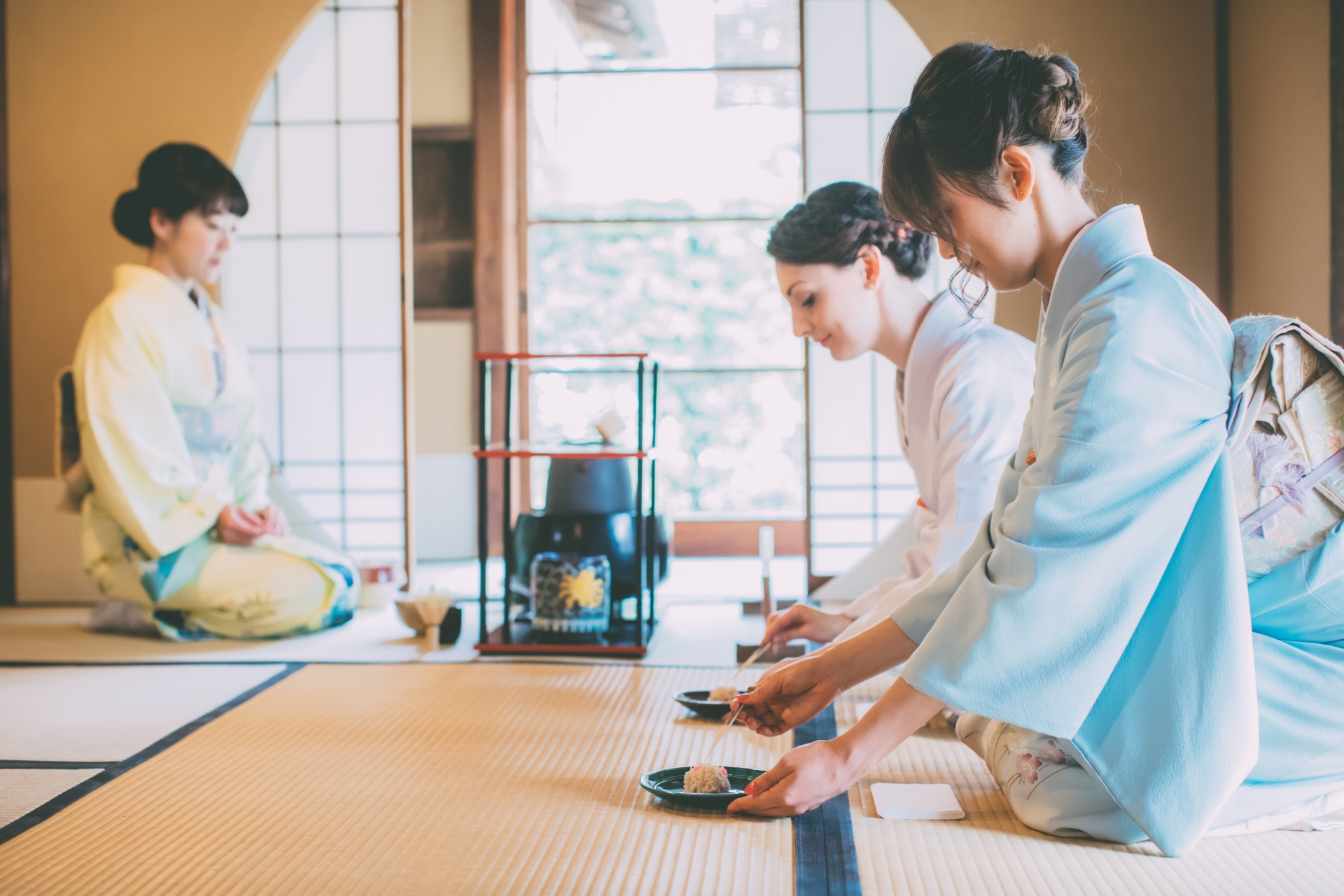1. The Origins of Mango Sticky Rice
Mango sticky rice has deep roots in Thai culinary culture. Thailand, with its tropical climate, is an ideal place for growing mangoes and rice, which are both staples in the country’s cuisine. The pairing of fruit with rice is also common in Southeast Asia, where rice is considered an essential part of almost every meal.
While it’s hard to pinpoint an exact origin date, mango sticky rice likely emerged as an adaptation of traditional Thai sticky rice desserts, which often use coconut milk as a sweetener. The dessert became popular in Thai cuisine for its delicious balance of sweet, creamy, and fruity flavors, and it has grown to become an iconic Thai dish loved worldwide.
2. The Ingredients: Simple Yet Flavorful
One of the great things about mango sticky rice is its simplicity. Despite using only a few main ingredients, each component plays an important role in creating the unique flavor and texture of this dish.
- Sticky Rice (Glutinous Rice): The base of the dish is sticky, glutinous rice, a type of rice that becomes soft and chewy when cooked. Sticky rice is essential because its texture holds together well and complements the creaminess of the coconut milk.
- Coconut Milk: This is what gives the dish its rich, creamy flavor. Coconut milk is simmered with sugar and a pinch of salt to create a balanced sweetness with a hint of savory undertone, which elevates the taste of the mango and sticky rice.
- Fresh Ripe Mango: Sweet, juicy mango slices are added to balance the richness of the rice and coconut milk. The mango should be ripe and flavorful; Thai varieties such as Nam Dok Mai and Keo Savoy are preferred for their bright, floral sweetness.
- Optional Toppings: Many versions of mango sticky rice include toppings like toasted mung beans for a bit of crunch or extra coconut cream drizzled on top for additional richness. Some people also sprinkle a touch of sesame seeds or garnish with a small sprig of mint.
3. How Mango Sticky Rice is Made
Making mango sticky rice involves a few simple steps, but attention to detail is key to getting the texture and flavor just right.
Step 1: Preparing the Sticky Rice
The sticky rice must be soaked for several hours, or ideally overnight, before cooking. This soaking process helps the rice cook evenly and achieve its characteristic chewy texture. After soaking, the rice is typically steamed rather than boiled to retain its chewy consistency.
Step 2: Making the Coconut Milk Sauce
While the rice is steaming, coconut milk is gently simmered with sugar and a pinch of salt to create a sweet and slightly savory sauce. This sauce is what gives the sticky rice its rich, creamy flavor.
Step 3: Combining the Rice and Coconut Milk
Once the sticky rice is cooked, it’s mixed with the warm coconut milk sauce. The rice absorbs the sauce, taking on its sweet and creamy flavors. This mixture is left to sit for about 10-15 minutes so the rice can fully absorb the coconut milk, achieving a perfectly soft and cohesive texture.
Step 4: Assembling and Serving
The sticky rice is served with freshly sliced ripe mango on the side. For an extra touch, a bit of thick coconut cream can be drizzled on top of the rice, and toasted mung beans can be sprinkled over the dish for added texture.
4. The Flavors and Textures of Mango Sticky Rice
Mango sticky rice is beloved for its harmonious blend of flavors and textures. The soft, slightly chewy sticky rice is soaked with creamy coconut milk, which adds sweetness and a hint of saltiness. This richness is balanced by the fresh, bright taste of ripe mango, which provides a juicy contrast. The result is a dessert that’s both refreshing and satisfying.
In Thai culture, desserts often balance sweet and savory flavors, and mango sticky rice is a perfect example of this balance. The salt in the coconut milk enhances the sweetness of the mango, while the creaminess of the rice and coconut milk creates a luxurious mouthfeel that’s hard to resist.
5. Mango Sticky Rice as a Cultural Icon
Mango sticky rice has grown to become more than just a dessert—it’s a cultural icon in Thailand. This dish is widely available from street vendors, restaurants, and high-end hotels, and it’s enjoyed both by locals and tourists. It’s especially popular during Thailand’s mango season, which runs from March to June, when mangoes are at their peak ripeness.
In recent years, mango sticky rice has gained global attention, even making its way into the international culinary scene. People worldwide have become captivated by its unique flavors, and it’s now commonly featured in Thai restaurants around the globe. Its popularity was even celebrated in 2022 when Thai rapper Milli famously ate mango sticky rice on stage at the Coachella music festival, sparking a worldwide interest in the dish and highlighting it as a symbol of Thai culture.
6. Health Benefits of Mango Sticky Rice
While mango sticky rice is indulgent, it does offer some health benefits:
- Mangoes: Mangoes are rich in vitamins A and C, which are essential for immune health and skin health. They also contain antioxidants, which help protect the body against free radicals.
- Coconut Milk: Coconut milk is a source of healthy fats and provides some minerals such as manganese and copper. However, it’s also high in calories, so it’s best enjoyed in moderation.
- Sticky Rice: Sticky rice is high in carbohydrates and provides a quick energy boost, although it lacks fiber compared to other types of rice.
Mango sticky rice can be part of a balanced diet if consumed in moderation, and it’s a delicious way to enjoy the natural goodness of mango and coconut.
7. How to Enjoy Mango Sticky Rice at Home
If you can’t make it to Thailand, making mango sticky rice at home is a great way to experience the flavors of this iconic dish. Here’s a quick summary of the recipe:
Ingredients:
- 1 cup glutinous (sticky) rice
- 1 ½ cups coconut milk
- ½ cup sugar
- ¼ tsp salt
- 1-2 ripe mangoes, sliced
Instructions:
- Soak the sticky rice for at least 4 hours, then steam until soft.
- Heat the coconut milk, sugar, and salt in a pot until dissolved. Pour most of it over the cooked rice and let it sit for 10 minutes to absorb.
- Serve the sticky rice alongside mango slices, and drizzle with the remaining coconut sauce. Enjoy!
This easy recipe allows you to experience an authentic taste of Thailand right from your kitchen.
Conclusion
Mango sticky rice is a delightful dessert that captures the essence of Thai cuisine: simple, balanced, and absolutely delicious. With its beautiful presentation, rich flavors, and satisfying texture, it’s no wonder this dish has won the hearts of so many people around the world. Whether you’re strolling the streets of Bangkok or recreating it at home, mango sticky rice is a treat that brings a bit of tropical sweetness to any table.





